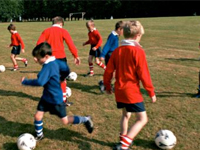
Inevitably sports fields, despite being a major educational facility, are at the bottom of the ‘food chain’ when it comes to receiving funding. Consequently sports fields at many schools fail to meet expectations at sometime during the year and the same problems often reoccur from one year to the next.
Although economic reasons are often cited for the fields’ substandard performance there are other considerations, namely:
• Poorly defined or unrealistic expectations
• Lack of an appropriate asset management plan to support expectations
• Lack of appropriate maintenance plans
• The reactive maintenance approach that is often adopted (aside from mowing and weed control)
• Inappropriate prioritisation of resources
Specialist, independent sports turf consultants help schools obtain better playing surfaces for their maintenance dollars by providing clear and independent advice, with the added benefit of improved playing conditions, which assist pupils to build better playing skills and add to the enjoyment of sport.
The provision of quality sports fields requires a number of considerations to be worked through.
Defining expectations
The expectation for each field should be clearly defined. This provides the basis for identifying capital and maintenance requirements and thus establishing appropriate budgets.
Equally it enables schools to quickly determine the appropriateness (or otherwise) of a given expectation.
• Is closure due to wet weather acceptable?
• What is the maximum number of day’s closure that is acceptable?
• How much play (use) must we accommodate?
• What level of play are we accommodating – senior representative play vs. junior or casual use?
Asset management plan
The next step is developing an appropriate asset management plan for this expectation. A feasibility study will need to be conducted to confirm the limiting factors and options available for moving forwards.
The most appropriate grass for the school’s situation will need to be identified, along with the maintenance requirements and costs for the different grassing options.
For example, temperate grasses, such as ryegrass or browntop, are used on fields in most parts of New Zealand.
However, new options such as Kikuyu are now the grass of choice for Auckland and further north given its better performance and typically lower maintenance costs than traditional grassing options.
It is also necessary to identify the capital improvement options that best meet the school’s expectations and the ramifications of each option. Potential options for improving the availability of the fields for play during winter include:
• Additional, appropriate maintenance – e.g. vertidraining.
• Improving levels to prevent ponding.
• Subsurface drainage.
• Sand technology.
• Artificial surfaces.
Each of these options provides differing levels of service and financial impact for the school.
Maintenance plan
A basic, regular maintenance programme is more cost-effective than letting the fields run down and spending several thousand dollars to resurface them – not to mention the additional costs required for cleaning classrooms thanks to muddy feet/bodies.
Although each field is unique it is important to be realistic.
The greater your expectations, or the more a field is used, the greater the maintenance requirements will be.
Priorities for maintenance activities should be based on the amount of use a field receives and/ or the importance of each field.
Generally, high use fields require greater inputs than lower use fields.
Too often, the maintenance of fields is made unnecessarily complicated or expensive.
The key is to prioritise resources and place the emphasis on those options that will provide the best return for your maintenance dollar.
For many schools, the maintenance priority list would consist of:
• Mowing – appropriate equipment that will not damage the field (e.g. tyre marks from cleated tyres), mowing frequency and height are the most important requirements.
• Usage control – where modern sand or synthetic surfaces are not an option, closure of the field(s) when they are excessively wet or soft will provide major benefits for the school, both in better playing quality for the remainder of the year and significant savings due
to reduced renovation.
• Nitrogen fertilization – too often fertiliser programmes are unnecessarily complicated and expensive.
Strategic nitrogen fertiliser applications during autumn/early winter should be the first priority and will provide a stronger plant through winter, when retaining grass cover is paramount.
• Weed control – for schools, weed control is critical (particularly for clover and Onehunga weed) to avoid the health (bee stings) and nuisance problems that they create.
Following these steps can help create sports field that will hold up to constant use throughout the year.
The much-delayed English draft curriculum is now out for consultation, generating discussion from teachers.
Research from AUT demonstrates arts, culture and recreation have positive impacts on all aspects of…
How effective has the school phone ban been in achieving its aims? Researchers from the…
School camps and excursions deliver hands on learning experiences, helping to consolidate classroom learning.
Innovations in AV technologies present new opportunities to engage with students. We look at how…
A new report from the University of Auckland’s Our Voices Project asks young people what…
This website uses cookies.